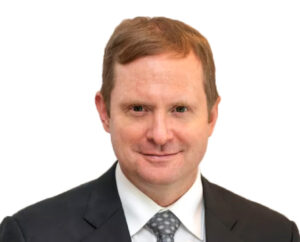Case details
Plaintiff: Collision caused need for shoulder and spinal treatment
SUMMARY
$138459
Amount
Verdict-Plaintiff
Result type
Not present
Ruling
KEYWORDS
back, brain, brain injury, cervical, concussion, head, headaches, lumbar, neck, neurological, radiculopathy, spasm, sprain, strain, thoracic head
FACTS
On Sept. 8, 2017, plaintiff Justin Kaufman, 37, a rabbi, was driving on westbound Calle Real, in Goleta. As Kaufman entered the intersection with Valdez Avenue, the passenger’s side door of his vehicle was broadsided by a vehicle operated by Virginia Bryant, who was attempting to make a left turn onto Calle Real from southbound Valdez Avenue. Kaufman claimed to his right shoulder, head, neck and back. Kaufman sued Bryant, alleging that Bryant was negligent in the operation of her vehicle. Kaufman claimed that before he entered the intersection, he noticed that Bryant was stopped at the intersection on Valdez Avenue. However, he claimed that Bryant failed to yield the right of way and struck his vehicle. Plaintiff’s counsel noted that a police officer on scene found Bryant at fault for the collision in violation of California Vehicle Code § VC 21802(a), which states that a driver of any vehicle approaching a stop sign at the entrance to, or within, an intersection shall stop. Bryant admitted liability for the collision., Kaufman claimed he sustained a concussion and a type I tear of the right shoulder’s superior labrum from anterior to posterior (a SLAP tear). He also claimed he sustained a cervical sprain and strain, a thoracic sprain and spasm, and a lumbar strain. He alleged that his spinal resulted in radiculopathy, cervicocranial syndrome (a cluster of symptoms that are believed to be caused by instability and misalignment in the cervical vertebrae) and cervicobrachial syndrome (a term that describes pain and stiffness of the cervical spine with symptoms in the shoulder girdle and upper extremity). Kaufman first sought treatment at The MedCenter, an urgent care facility in Santa Barbara, on Sept. 10, 2017, two days after the accident. He was initially diagnosed at the urgent care facility with a strain of a cervical paraspinal muscle and a spasm of a thoracic paraspinal muscle. The next day, Kaufman saw a physician’s assistant, who determined that Kaufman had a headache, neck pain, back pain and acute post-traumatic stress disorder due to the subject accident. As a result, the physician’s assistant instructed Kaufman to go to an emergency room and undergo a CT scan of his brain to rule out any bleeding. She also recommended that Kaufman follow-up with therapy to discuss his post-traumatic stress disorder symptoms. In addition, she advised Kaufman to return on an as-needed basis for continued care. After seeing the physician’s assistant on Sept. 11, 2017, Kaufman went right to the emergency department at Santa Barbara Cottage Hospital, a Cottage Health hospital in Santa Barbara, for further evaluation and treatment. In the emergency room, he complained of a persistent headache, and constant and worsening pain in his neck, back and right shoulder. He rated his headache severity as being a 3 to 8 out of 10. He also claimed that his symptoms became aggravated by staying in one position too long. A CT of the brain was performed, and Kaufman was diagnosed with a concussion without a loss of consciousness. On Sept. 15, 2017, Kaufman presented to a chiropractor at Johnson and Yong Chiropractic, in Santa Barbara, and underwent a chiropractic evaluation and treatment. During the evaluation, Kaufman complained of continued headaches; and pain in his neck, right shoulder, right arm, and middle and lower back. The chiropractor diagnosed Kaufman with headache, a cervical sprain, a thoracic sprain, a lumbar strain, radiculopathy, cervicocranial syndrome and cervicobrachial syndrome. Kaufman then began a course of chiropractic treatment, which consisted of chiropractic manipulative treatment to the spine, mechanical traction, a full spinal massage, therapeutic exercises, and a home exercise program. He also began a course of physical therapy, which consisted of manual therapy, therapeutic exercises and a home exercise program. Ultimately, Kaufman underwent arthroscopic surgery with debridement, a subacromial decompression and a distal clavicle excision on the right shoulder. Kaufman claimed that he is left with pain and discomfort, which causes him to have difficulty with normal, everyday activities of daily living, such as difficulties with lifting, standing for long periods of time, playing with his children, throwing, pushing and pulling, twisting, carrying, and reaching above the shoulder level. He also claimed that his prevent him from working, which causes a loss of earnings. Kaufman’s physicians recommended future surgery on the right shoulder. Kaufman sought recovery of past and future medical costs, past and future loss of earnings, and damages for his past and future pain and suffering. Defense counsel disputed the reasonableness of Kaufman’s alleged medical care and costs. Counsel argued that Kaufman only sustained a strain to the neck and right shoulder and that as a result, only some conservative physical therapy was warranted. Defense counsel further argued that Kaufman would not require any future surgery.
COURT
Superior Court of Santa Barbara County, Santa Barbara, CA
Similar Cases
Negligent tire repair caused serious rollover crash: family
AMOUNT:
$375,000
CASE RESULT:
Plaintiff won
CATEGORY:
Personal Injury
Steep, winding road caused multiple truck crashes: plaintiffs
AMOUNT:
$32,500,000
CASE RESULT:
Plaintiff won
CATEGORY:
Personal Injury
Dangerous highway caused fatal multiple vehicle crash: suit
AMOUNT:
$18,681,052
CASE RESULT:
Plaintiff won
CATEGORY:
Personal Injury
Applicant claimed future care needed after fall from roof
AMOUNT:
$3,500,000
CASE RESULT:
Plaintiff won
CATEGORY:
Personal Injury
Roofer claimed he needs future care after fall from roof
AMOUNT:
$6,000,000
CASE RESULT:
Plaintiff won
INJURIES:
- anxiety
- brain
- brain damage
- brain injury
- cognition
- depression
- epidural
- extradural hematoma
- face
- facial bone
- fracture
- head
- headaches
- hearing
- impairment
- insomnia
- loss of
- mental
- nose
- psychological
- scapula
- sensory
- shoulder
- skull
- speech
- subdural hematoma
- tinnitus
- traumatic brain injury
- vision
- Show More
- Show Less
CATEGORY:
Personal Injury
Plaintiff: Improperly trained delivery personnel caused injuries
AMOUNT:
$4,875,000
CASE RESULT:
Plaintiff won
CATEGORY:
Personal Injury




